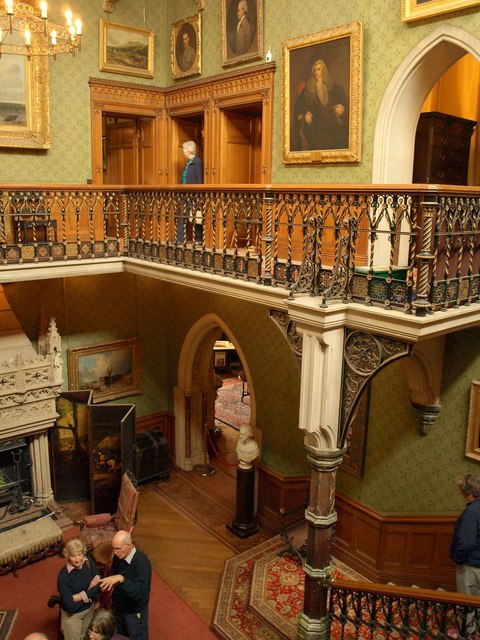
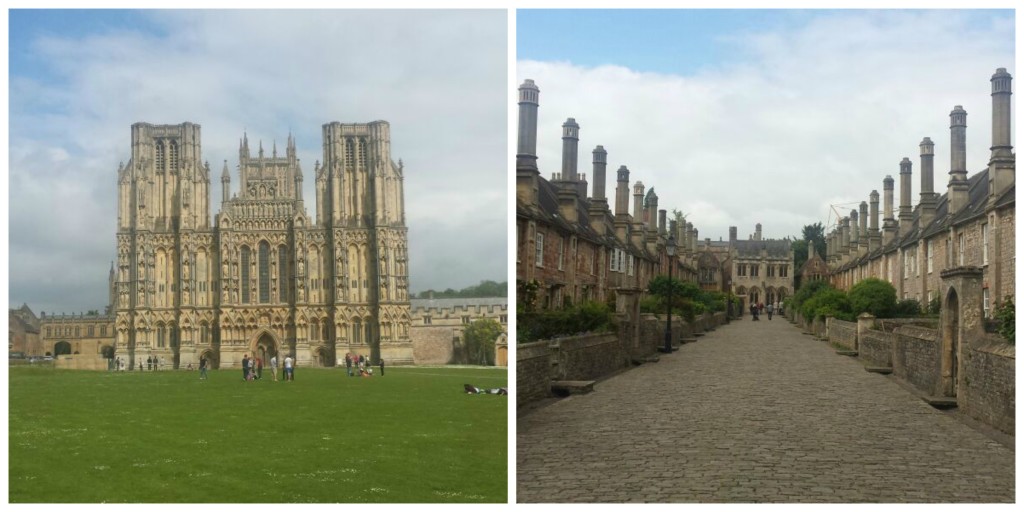 Our trip to Wells and Tyntesfield House took place on the late May bank holiday Monday. We were lucky to have good weather, sunny but a little cool, which was fine. The trip was quite spontaneous in that the only plans we’d made up until that morning was that we were “going to have a day out”! We discussed a couple of places, but decided on Wells as it’s not too far away and we could easily incorporate a detour to Tyntesfield House near Bristol on the way.
Our trip to Wells and Tyntesfield House took place on the late May bank holiday Monday. We were lucky to have good weather, sunny but a little cool, which was fine. The trip was quite spontaneous in that the only plans we’d made up until that morning was that we were “going to have a day out”! We discussed a couple of places, but decided on Wells as it’s not too far away and we could easily incorporate a detour to Tyntesfield House near Bristol on the way.
Tyntesfield House
Tyntesfield turned out to be a beautiful and fascinating place to visit, especially as only just a few days before, we didn’t even know it existed! Tucked away in a rural setting a little north of Bristol, Tyntesfield House is a Victorian Grade I listed building, rocking the Gothic Revival style!
Bought in 2002 by the National Trust following a fundraising campaign, it is rumoured that Madonna and Kylie Minogue were also among the bidders, and I can see why. I sent this picture to my children on the day we visited with the caption “welcome to our new home”! Set in beautiful, mature, secluded grounds, the house seems to welcome you. It has a warm feeling about it and although impressive, it is not daunting.
Bought in 1843 by William Gibb, a wealthy businessman who had made his fortune importing and selling guano as fertilizer, it was some 20 years later before he commissioned the architect John Crace to undertake significant remodelling work in order to create the style we see today. At that time the house was used as a family home, but later, during WWII the grounds were opened up to the American army who set up a hospital camp to treat wounded soldiers.
 On the day we visited, there was a re-enactment of an authentic-looking army troupe marching through the grounds who were later honoured by a visit from ‘Queen Victoria’!
On the day we visited, there was a re-enactment of an authentic-looking army troupe marching through the grounds who were later honoured by a visit from ‘Queen Victoria’!
We also took a tour of the interior of the house which is richly and beautifully furnished and decorated with striking portraits of the family through the generations, a comprehensive 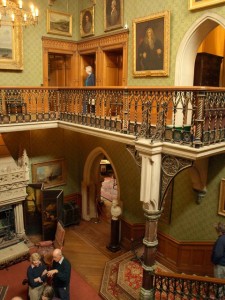 Victorian library and billiard room, along with comfortable family rooms complete with plush furniture.
Victorian library and billiard room, along with comfortable family rooms complete with plush furniture.
My only disappointment was that the house has some spectacularly large windows which, in its heyday would have flooded the rooms with sunlight. Unfortunately (fortunately, actually!), in order to preserve the interior, the rooms are protected from the sunlight with specialist blinds, so the full effect of the lit-up rooms could not be experienced. As someone who loves to see rooms lit up by sunlight, this was a bit of a shame (although I support the reasons for doing so!).
I’m so glad we went though, it was well worth the visit.
From Tyntesfield, we continued our journey on to the City of Wells.
City of Wells
Situated at the southern edge of the Mendip Hills, Wells is often referred to as the smallest city in England. With a population of around 11,000 inhabitants, Wells has held city status since medieval times by virtue of the impressive Cathedral which was constructed there during the thirteenth century, firstly under the direction of Bishop Reginald, and later completed by Bishop Jocelin.
In this year of the 800-year Magna Carta anniversary, the name of Bishop Jocelin has featured often in our city, and particularly, cathedral visits as he aided in the writing of document.
The impressive West Front of the Cathedral displays around 300 statues which have survived since medieval times. Gazing out on an expanse of green parkland, the West Front of the Cathedral is striking. In the background, the walls of the Bishop’s Palace are also visible which adds to the striking vista.
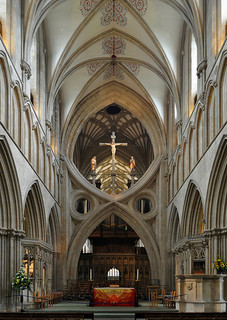 On entering the Cathedral we were struck by how ‘clean’ the architecture appeared to be. With other Cathedral visits, the agedness of the stonework is very apparent, and, frankly, this adds to the pleasure of the visit. This seemed to be missing from Wells Cathedral, almost as if it had been recently stone blasted! However, this added a light and airy feel to the visit.
On entering the Cathedral we were struck by how ‘clean’ the architecture appeared to be. With other Cathedral visits, the agedness of the stonework is very apparent, and, frankly, this adds to the pleasure of the visit. This seemed to be missing from Wells Cathedral, almost as if it had been recently stone blasted! However, this added a light and airy feel to the visit.
Looking down the nave towards the altar, we were struck by what appeared to be a modern addition to the architecture – The Scissor Arches. However, on further research, it turns out that the Arches were added in around 1348 as a base structure for a tower that showed signs of collapse.
Vicars’ Close
Near the Cathedral we stumbled across a pretty little cobbled street. With terraced houses running up both sides, each house had a very tall chimney and a coat of arms. It turns out that this is Vicars’ Close, a street of 42 small houses built by Bishop Ralph in 1348. The houses were provided for his 42 choristers and the street is now considered to be the oldest residential street in Europe. You can see a a shot of the street on the main intro picture (right).
Hot Fuzz!
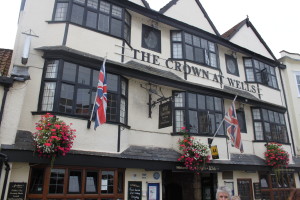 Edgar Wright who was brought up in Wells, is the Director of, amongst other films, Shaun of the Dean and Hot Fuzz. While we were taking a walk around the city (which is more like a market town!), we came across The Crown pub which was used as a location for shooting some of the Hot Fuzz movie, starring Simon Pegg, who’s also from the area!
Edgar Wright who was brought up in Wells, is the Director of, amongst other films, Shaun of the Dean and Hot Fuzz. While we were taking a walk around the city (which is more like a market town!), we came across The Crown pub which was used as a location for shooting some of the Hot Fuzz movie, starring Simon Pegg, who’s also from the area!
So, there we are, city number 7 now completed! We had a another lovely day out, learned a little bit more about our history and culture and saw some wonderful places.
Photos: Derek Harper , Rodw , seier+seier




